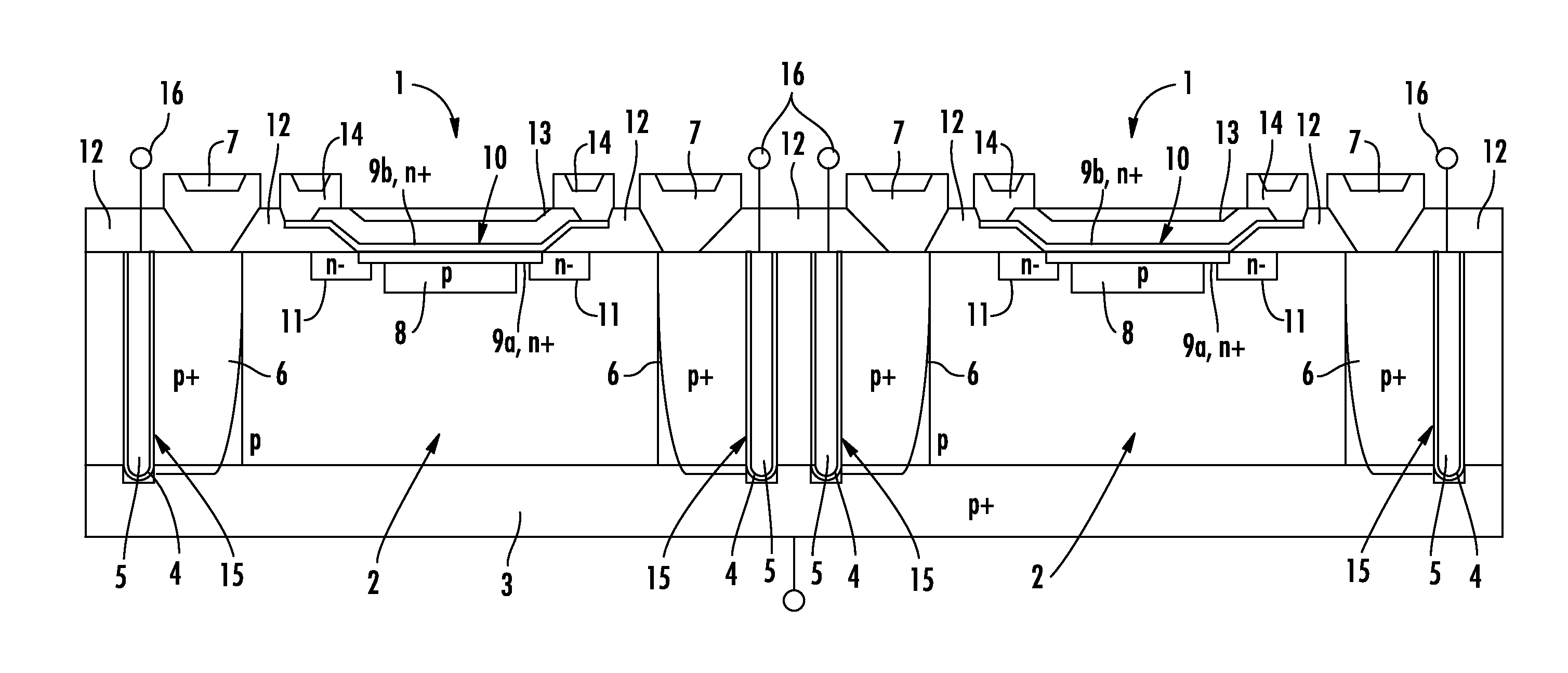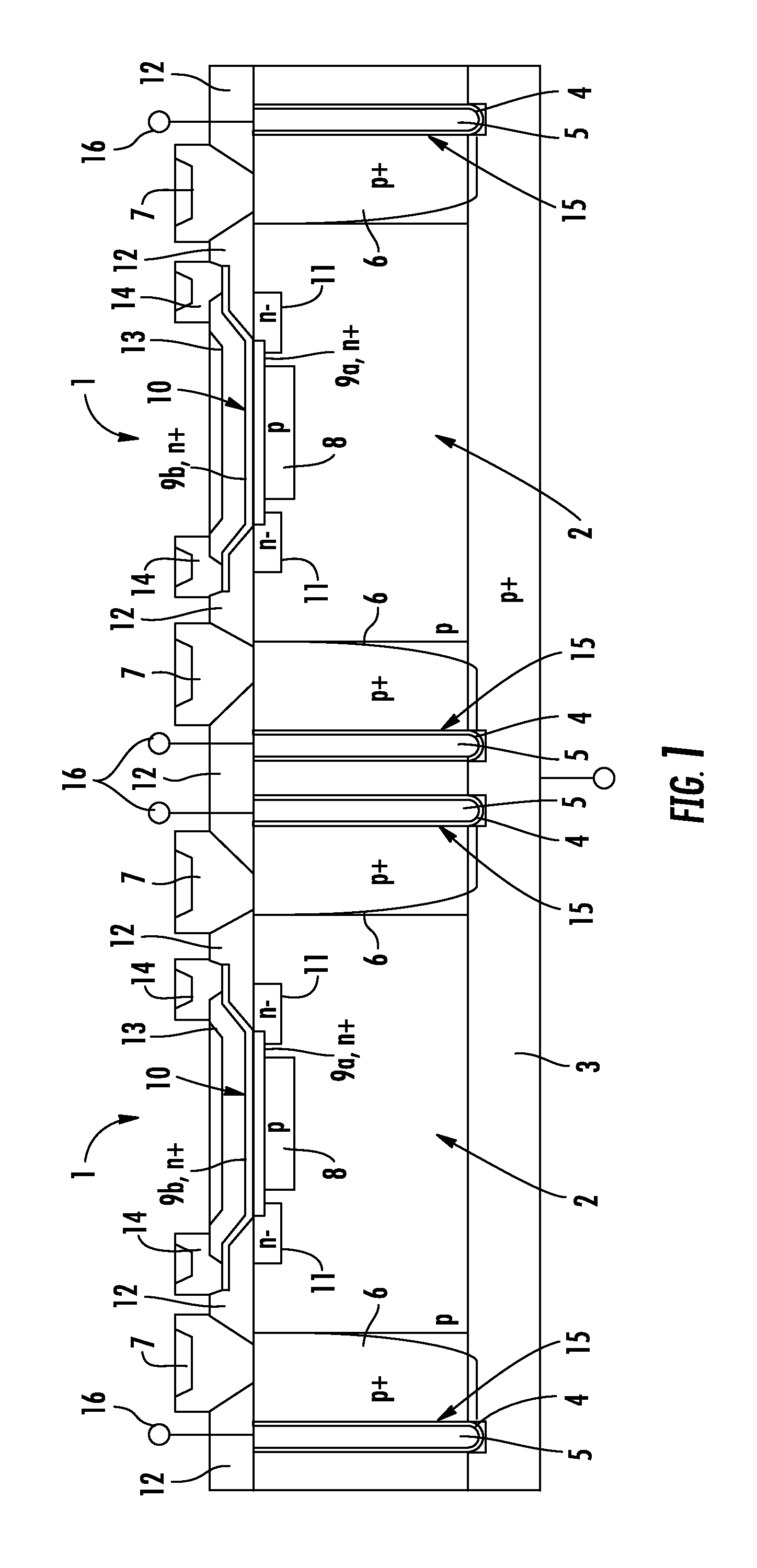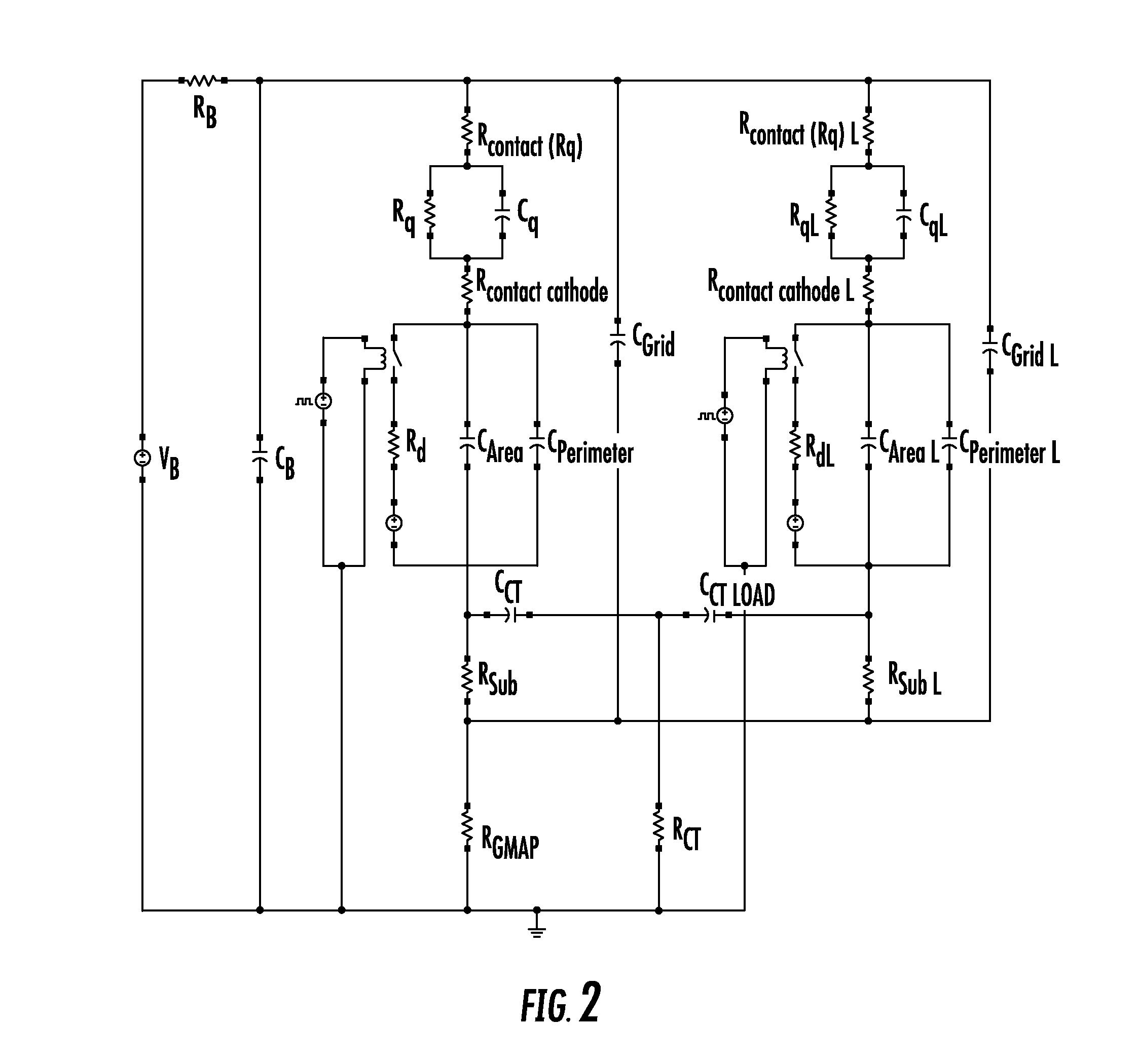Photo detector array of geiger mode avalanche photodiodes for computed tomography systems
a computed tomography and photodiode technology, applied in the field of semiconductor photodetectors, can solve the problems of inability to provide data or feedback as to the number and/or energy of photons detected, inability to provide energy discriminatory data or otherwise count the number and/or energy of photons actually received by a given detector element or pixel, and achieve accurate counting of received photons. high gain, low noise
- Summary
- Abstract
- Description
- Claims
- Application Information
AI Technical Summary
Benefits of technology
Problems solved by technology
Method used
Image
Examples
Embodiment Construction
[0026]An exemplary structure of an array of Geiger-mode avalanche photodiodes (GMAP) is schematically illustrated in FIG. 1. In the depicted example, only two photodiodes are shown, though the array may comprise any number of photodiodes organized in rows and columns. The avalanche photodiode has three terminals instead of two: a cathode contact 14, an anode contact 7, a metal structure 5 having an output terminal 16 on which spikes correlated to avalanche events of the photodiode may be sensed. The metal structure 5 is defined in a trench coated with a dielectric 4, preferably silicon oxide, and is thus capacitively coupled with a region of the photodiode, that in the shown example is the anode diffusion 6.
[0027]The GMAP active area is defined by the p enrichment diffusion 8 (anode); this enrichment diffusion 8 identifies also the high electric field active region. The anode is contacted by a metal bus connected to p+ anode contact layer 6 or by a back-side metallization of the p+ ...
PUM
 Login to View More
Login to View More Abstract
Description
Claims
Application Information
 Login to View More
Login to View More - R&D
- Intellectual Property
- Life Sciences
- Materials
- Tech Scout
- Unparalleled Data Quality
- Higher Quality Content
- 60% Fewer Hallucinations
Browse by: Latest US Patents, China's latest patents, Technical Efficacy Thesaurus, Application Domain, Technology Topic, Popular Technical Reports.
© 2025 PatSnap. All rights reserved.Legal|Privacy policy|Modern Slavery Act Transparency Statement|Sitemap|About US| Contact US: help@patsnap.com



